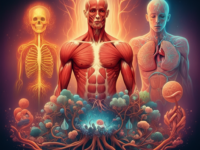Have you ever wondered if life could exist on Venus or Mars? The possibility of alien life—especially within our solar system—has fascinated scientists, space enthusiasts, and science fiction fans for decades. While the idea of extraterrestrial beings may seem relegated to the pages of novels or blockbuster films, astrobiologists are working tirelessly to determine if life, even microbial, could call these neighbouring planets home. What might these forms of life look like? How could they interact with one another? And what lessons could they teach us about our place in the cosmos?
Exploring such questions is not only thrilling but also critically important. Discovering life beyond Earth would transform our understanding of biology, evolution, and even the future of humanity. This blog takes a closer look at the conditions of Venus and Mars, the possibilities of life on these planets, and the tantalizing idea of “alien relationships” that could emerge in such environments.
Venus: A Hotbed for Life?
Known for its scorching surface temperatures and thick, toxic atmosphere, Venus may seem like the least likely candidate for life in our solar system. But could life find a way in even the most extreme conditions?
The Harsh Reality of Venus
Venus’s atmosphere is primarily carbon dioxide, with clouds of sulfuric acid and surface temperatures that reach a staggering 900°F (475°C). The atmospheric pressure on Venus is 92 times greater than Earth’s, comparable to being 3,000 feet below the ocean. These harsh conditions make life as we know it impossible on the planet’s surface.
However, conditions in Venus’ upper clouds—about 30 to 40 miles above the surface—paint a more hopeful picture. At this altitude, temperatures and pressures are more Earth-like, offering a potential haven for microbial life. Scientists speculate that sulfur-based organisms could, in theory, survive by harnessing chemical energy from the planet’s rich atmosphere.
Hypothetical Cloud Life
If life exists on Venus, it would likely be microbial and airborne. These microorganisms may float in the planet’s dense clouds, relying on sulfur compounds and ample sunlight for energy. Similar extremophiles on Earth thrive in volcanic vents and highly acidic environments, lending credibility to the idea these conditions might support life on Venus.
The Role of Technology
Uncovering the secrets of Venus will require technological marvels. NASA’s DAVINCI+ and VERITAS missions, launching in the 2030s, aim to study Venus’ atmosphere and surface in unprecedented detail. These missions seek to answer questions about Venus’ potential to harbour life and its geological features, bringing us closer to solving one of the solar system’s great mysteries.
Mars: The Search for Life Continues
Mars has long been in the spotlight when it comes to searching for life. Unlike Venus, the Red Planet once had conditions eerily similar to Earth’s, making it one of the most promising candidates for extraterrestrial life.
Mars in the Past and Present
Billions of years ago, Mars boasted flowing rivers, lakes, and possibly even oceans. Its thicker atmosphere would have protected the planet from harsh cosmic radiation, creating conditions suitable for life. While today’s Mars is a barren, frozen desert with an atmosphere too thin to support liquid water on the surface, evidence of its watery past has reignited hope of discovering life.
Evidence of Water and Habitats
Recent discoveries, such as subsurface lakes of briny water and ancient riverbeds, suggest that some form of life—perhaps microbial—could still exist tucked away beneath Mars’ surface. Organisms that thrive in extreme conditions on Earth, like in Antarctica’s subglacial lakes or deep underground rock formations, provide analogues for what Martian life might look like.
Mars Missions
Groundbreaking missions are currently underway to uncover the truth. NASA’s Perseverance rover is collecting rock samples for future return to Earth, while the European Space Agency’s Rosalind Franklin rover will search for signs of past or present life directly beneath Mars’ surface. Such missions are laying the groundwork for humankind’s deeper exploration of the Red Planet.
Alien Relationships: Interplanetary Romance or Conflict?
Now comes the intriguing—if highly speculative—question. If both Venus and Mars harboured life, how might these disparate ecosystems interact? Would we witness interplanetary romance, conflict, or simple indifference?
Imagining Ecosystems on Venus and Mars
Imagining life on Venus and Mars requires us to think beyond Earth-like norms. Life on Venus would likely consist of sulfur-consuming microbes, while on Mars, hardy subsurface organisms could rely on briny water and nutrients found deep underground. The stark differences in environmental conditions mean they’d evolve in profoundly distinct ways, making any interaction reliant on unique adaptations.
Evolutionary Pathways and Alien Society
It’s fascinating to consider how the evolutionary pressures on Venus and Mars might influence their hypothetical ecosystems. Could Venusian microbes “travel” to Mars, carried by meteorites ejected during asteroid impacts? Alternatively, advanced alien life might have evolved technological ways to communicate or adapt to such harsh conditions, fostering collaboration across planetary boundaries.
At its core, this speculative scenario raises questions about the nature of cooperation. Could two alien societies—so vastly different in origin and means of survival—find common ground?
Societal and Ethical Implications
The discovery of life on Venus or Mars would not only captivate scientists but also raise deep ethical and philosophical questions. How should humanity interact with alien life? Should we attempt to contact or even “colonize” such ecosystems, or would doing so disrupt their natural evolution? These questions compel us to consider our responsibilities as stewards of life—on Earth and beyond.
Fueling Wonder and Discovery
Speculating about life on Venus and Mars pushes the boundaries of our imagination and scientific understanding. While planetary exploration is rooted in hard data, it thrives on the curiosity and dreams of humanity. The search for life on Venus and Mars reminds us of the infinite wonders of the cosmos and our yearning to uncover its deepest truths.
This pursuit hinges on continued investment in space exploration and astrobiology. By supporting missions to Venus and Mars, we’re not just searching for life—we’re embarking on a quest to understand our origins and place in the universe.
No matter where this cosmic mystery leads, the ultimate importance lies in maintaining our innate human curiosity. After all, every breakthrough in science begins with a simple yet profound question. What if?





















0 Comments